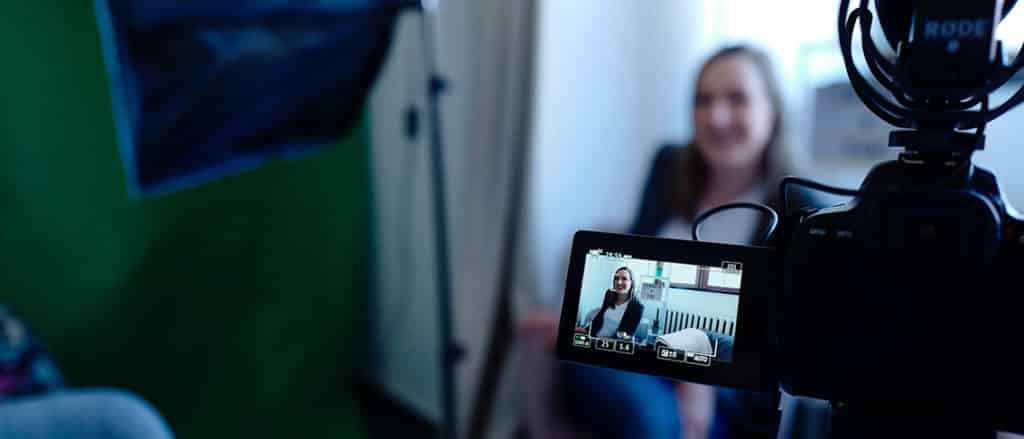Marvel is making headlines with its recent castings of two actors who are Deaf. Marvel’s efforts to increase on-screen diversity and portray disabilities authentically have captured the attention of both fans and critics alike.
In Hollywood, only 22% of characters with disabilities are currently portrayed by actors with the same disability. While Marvel and other production companies have made great efforts to promote diversity and inclusion, characters with disabilities continue to be portrayed by actors without disabilities. This reality has stirred a conversation around the importance of onscreen disability representation and a need for greater inclusion in the entertainment sphere.
How Marvel & Other Media Producers Are Sparking Change
The statistics are similar for TV as well, with only 16% of TV shows being inclusive of actors with disabilities. All producers and content creators can learn from Marvel’s efforts to authentically speak to audiences across the globe.
The first superhero who was Deaf was just introduced to the Marvel Cinematic Universe in the film Eternals in November 2021. Lauren Ridloff, an actor who is Deaf, has made cinematic history by portraying the character Makkari. Most recently, actress Alaqua Cox, who is Deaf, was cast to portray a Native American leader Echo, who is Deaf, in the series Hawkeye.
Additional films like the documentary Crip Camp, which received an Oscar nomination this year, highlight the need for authentic disability representation on-screen. This particular film explores the topic of disability history and shares with viewers the real, human experiences of students who grew up together and formed a part of key disability movements like the 504 Sit-In of 1977.
“It is not only important to increase representation but also to ensure that the narrative is good,” said RespectAbility’s Entertainment & News Team in a report on disability. “It’s not enough to just be included – we have to be included in an authentic way, telling diverse, complex stories of the disability experience.”
As the conversation about on-screen portrayals evolves, it’s equally important to consider how media viewers are also being offered inclusive experiences. Providing accessible experiences to diverse viewers is becoming more top of mind for many content creators and producers.
Why Audience Accessibility Matters More Than Ever
The debate around the media needing to do more for diversity and follow in Marvel’s footsteps has also sparked a conversation around providing more inclusive viewing experiences. It’s now rare for moviegoers, viewers on streaming sites like Netflix and those who are watching TV at home to not have the option to view with captions.
Captions provide an easy fix to offer accessibility to individuals who are Deaf or hard of hearing, but now they’re being used by a variety of others who prefer to watch with the captions turned on. People who benefit from access to captions also include those with ADHD, auditory processing disorder, those consuming content in a non-native language, and on-the-go individuals who may not be able to listen to audio, for example, when commuting or next to a sleeping family member.
Movements like One Open’s campaign reveal that there’s a greater demand coming from consumers for media captioning and transcription. Media professionals who invest in accessibility tools like captioning aren’t only doing the right thing by their audiences with disabilities, they’re also reaching and retaining greater audiences.
Additionally, there are FCC guidelines to consider. To meet them and deliver an equitable experience, not to mention avoid a lawsuit, ensuring the captions are accurate is key. The quality of your captions can really make or break a viewer’s experience and ability to comprehend the content, so using a professional captioning service that offers high accuracy and meets FCC guidelines like Verbit’s is best practice.
Inclusion May Be Trending, But It’s Here To Stay
Marvel’s push for greater diversity and inclusion has only set the stage for more media producers to follow suit Providing both on-screen representation and inclusive spaces for viewers, including the disability community, is now expected.
“Consumers with disabilities represent a $1 billion market segment. When you include their families, friends and associates, that total expands to more than $1 trillion,” reported RespectAbility’s Entertainment & News Team.
Verbit provides captioning, transcription, and translation tools that are used by a variety of media producers like MAK Pictures to improve accessibility for film, TV and video content. Reach out to learn more and ensure your media meets diverse viewer needs.

